Tonight's Gifts from the Sea
Return To Tonights Menu
The Source

The Proteins
All of our proteins come from completely sustainable, wild harvested fisheries. All of them were harvested within 50 miles of our farm location.
Olympias

Let's start here: when Mark Twain waxes about the oysters he loved most in San Francisco; he was talking about an Olympia Oyster from the Willapa Bay.
Olympias (Ostrea Lurida) are the indigenous West Coast Oyster. Overfishing, logging and hydraulic mining almost completely wiped them out of at the end of the 19th Century. By the 20th Century they were nearly extinct.
In 2021, when we bought our first farm, we ended the practice of dredging on our beds and encouraged the return eel grass. Within 12 months we saw an explosion of Olympias. One of the few oysters that are brooders (meaning they have both male and female reproductive organs and can fertilize eggs in their shells), they require firm ground and protection. To provide that, we put oyster shells down on our beds to give the bed stability and a base for them to attach to; while the eel grass slows the flow of water through and over the beds. Thus, when we stopped dredging, put shell on the beds and brought the eel grass back we enabled their recovery.
Today, we believe we have the largest wild, sustainable, commercial population of Olympias in the world. If we don't then we will within the next three years. Like Mark Twain, believe that Olympias are simply the best oyster in the world.
Hands down.
Olympias are a small oyster, never more than about 1.5" in diameter. They have a distinctive and amazing flavor. Olympias are very slow growing and take 3-5 years to reach commercial viability.
Pacifics

When someone says they are serving a Washington or West Coast Oyster, this is it: Crassotrea Gigas.
First imported to the Willapa Bay in 1922 from Japan, they have become the most widely produced oyster in the world. They are now grown in every major Oyster farming area globally, except the Gulf of Mexico.
They grow extremely quickly and take between 10 and 24 months to reach a commercially viable size.
Pacifics thrive on the Willapa Bay and we often see them growing larger than 12" if we let them. The bay also gives them them most unique finish of any Pacific anywhere in the world. The unique algae combination in the bay gives them their famous "cucumber and melon" finish.
The half shell oysters are our own "Oysterville Selects". Today's oysters were hand-picked on our Nemah River beds. Is it a sweeter oyster as the east side of the bay has a lower salinity, due to the Nemah river, than the west or north (where the Olympias came from). Those with a slightly reddish hue are our Slough variety. Sitting in the bottom of the slough, as opposed to growing on the bed means they have more contact with the mineral rich river water and imparts a slightly more metallic flavor.
Dungeness Crab

Without question, this is the largest commercial seafood product that comes out of our area. The season runs from December until early April. Unlike many other crab fisheries, there are no limits or quotas as it is totally sustainable. The only limit are the number of available commercial licenses; which in turn limits the number of pots that can be fished.
This is a near shore fishery with pots being laid from 0-10 miles out. Generally, the boats work in a couple of hundred feet about 1-2 miles offshore. The Willapa Bay has a large fishery in addition to the near shore fishery.
Sadly, it is a dangerous profession and we lose at least one crab fisherman every other year on average. This year was no exception as we lost one of the fisherman based out of the Willapa Bay in January.
Petrale Sole

